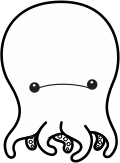◀︎ BLOG
Inviting Algorithms to the Design Team
As a data scientist, I know computers are great at trying lots of things quickly. But when it comes to learning artful nuance, they can fall flat. At the same time, human graphic designers are great at tweaking and critiquing, but they can only move their hands so fast in Illustrator. It's a juxtaposition that begs the question, can AI and humans collaborate to leverage their unique strengths?
As my team and I prepared for Typeforce, an annual Chicago typography gallery show, we started to think about how we could leverage AI and our own creative skills to build an intelligent system that could work with us—a communication designer, a production designer, and a data scientist—to create a visually distinct submission.
While you might think of typography as designing or selecting just the right font and arranging it immaculately, submissions to Typeforce range far outside that, including everything from carved sculptural elements and needlepoint to hand-drawn tableaus and digital installations. It was our first time submitting to the show, and our goal was to take advantage of this wide-open opportunity and use our individual crafts to make something out of the ordinary.
We imagined a creative process where Kristen, our communication designer, would give an algorithm examples of posters with interesting type compositions, and it would try to learn from them and spit back lots and lots of attempts to create something similar. Kristen could use the algorithm’s generated posters as starting points for creating new posters to feed back into it, as well as clues for what it still needed to learn. Trying to train the algorithm could itself become a great set of constraints for creativity, and when it was over, we could show off the visual artifacts of that back-and-forth process at the show.
We landed on Dadaist and Futurist compositions as an interesting place to begin. The Dadaists made things that didn’t make sense, reacting to a world (at the time, in the midst of World War I) that also didn’t make sense. That felt relevant to today as well, and had the added bonus of being something a computer might be better at producing than more immaculate, grid-based layouts.
The left and center posters are by Filippo Tommaso Marinetti; the right is by Kurt Schwitters.
So we got to work collecting historical examples we liked, and Kristen traced them so I could feed them into our algorithm as digital files. I got to work on the algorithm itself, which we named Kurt, after the Dadaist artist and designer Kurt Schwitters.
For Kristen, teaching Kurt initially felt weirdly similar to teaching a human design student. He made compositions and she looked at them, identified his strongest concepts, and "suggested" ways that they could be improved through the next round of examples. Then he responded to her feedback.
After this first exchange, though, the differences between an algorithm and a human design student became more apparent. Kurt's learning was reactive, limited to the examples he's seen and the only way he knows to think—in numerical variables like font sizes, rotations, and X-Y coordinates. Human designers often start out this way too—just absorbing examples of design and then mimicking them—but they usually grow past it. Instead of just copying a poster they see, the poster might inspire them to push aspects of it further, or combine them with other styles that work well together. AIs like Kurt can’t do this the way a person can—certainly not yet, and probably not anytime soon.
Kurt also doesn’t understand English, much less design terminology or ideas about why he’s doing anything. He can’t understand feedback about tone or context that Kristen might give her real students, like "your typography feels a little uninviting and impersonal. Is that tone appropriate to your audience/content/message?" And being able to respond to those sorts of questions in a sensitive, nuanced way is pretty central to being a good communication designer.
Ultimately we filled the wall with 90 prints, which made for a nice display of Kurt’s strengths—his ability to learn, and how prolific he can be—as well as Kristen’s—her skill as a designer and how she used those skills to teach.
Designers like Kristen can lean on Kurt to do things humans can't, like create dozens of compositions in a minute, or provide modifications or jumping off points that are really off the wall and decidedly not what an experienced designer would do. Some creative thinkers are already experimenting with these kinds of techniques; Robin Sloan, for example, a writer who hacked a text editor to complete his sentences using a deep learning model trained on a bunch of old sci-fi stories.
We imagine a future with more tools that creators can “teach"—unique products of an individual’s sensibilities that serve to amplify their intent and challenge them creatively, like a synthesizer that learns to play along and accompany in a style complementary to a musician’s vision. We hope Kurt inspires other designers, engineers, and data scientists to explore this future by building “collaborators” together.

